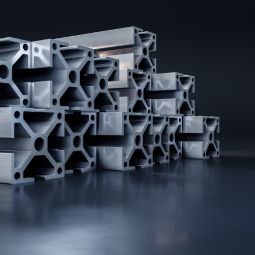
Aluminum, often considered the metal of the modern era, has significantly revolutionized architectural design. Its unique properties, including its lightweight nature, strength, and resistance to corrosion, have made it a favorite among architects and builders worldwide. This versatile metal allows for innovative design flexibility and promotes sustainability and efficiency in construction.
Let’s look at why aluminum is a game-changer for architectural design and how it has transformed the industry.
Its lightweight nature is one of the most significant advantages of using aluminum in architectural design. Aluminum’s density is about one-third that of steel, making it a preferred choice for building structures where weight reduction is critical. This property allows architects to create tall, complex designs without compromising on strength and stability. Furthermore, aluminum’s strength-to-weight ratio is higher than other commonly used metals, such as steel or copper. This strength makes it a perfect fit for high-rise buildings and structures where durability and structural integrity are essential.
Aluminum has natural corrosion resistance due to its ability to form a protective oxide layer on its surface when exposed to air. The oxide layer prevents further oxidation, making aluminum structures durable and long-lasting. This property makes it a popular choice for buildings in coastal areas or places with high humidity. Unlike other metals that require regular maintenance and coatings to prevent corrosion, aluminum’s natural resistance eliminates the need for extra maintenance costs.
Aluminum’s versatility is another reason it has become a game-changer in architectural design. Manufacturers can easily mold, bend, and shape it into various forms, allowing architects to push the boundaries of traditional design concepts. This versatility is especially crucial for modern architecture, where unique and unconventional designs are in demand. Additionally, aluminum’s anodization or ability to hold onto paint in different colors gives architects the freedom to create vibrant and visually appealing structures.
There has been a growing focus on sustainable and eco-friendly construction practices in recent years. Aluminum is highly recyclable, with nearly 75% of all aluminum ever produced still in use today. Moreover, recycling aluminum takes only five percent of the energy compared to producing it from raw materials. This difference reduces waste and promotes efficiency in the construction process.
Aluminum is a game-changer for architectural design because of its lightweight nature, strength, corrosion resistance, versatility, and sustainability. Its use has allowed architects to push the boundaries of traditional designs and create innovative and sustainable structures. Aluminum will undoubtedly play a significant role in shaping the future of architectural design as we continue to prioritize efficiency and sustainability in the construction industry.
Contact A-Line Automation for high-quality and cost-effective solutions if you need t-slot panel connectors or other aluminum extrusions. Let’s continue harnessing the power of aluminum to create a better, more sustainable future for architectural design.